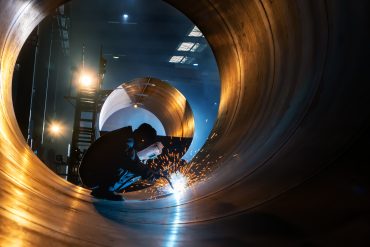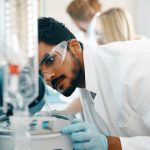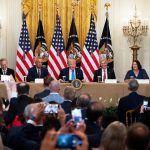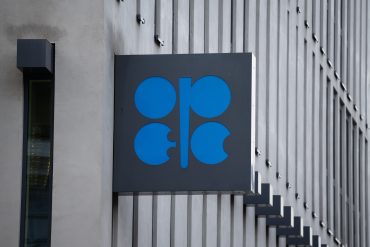
New Steel Tariffs Drive $14,000 Price Surge for Home Construction
5 minute read

Steel tariff hikes force construction companies to delay projects as material costs strain housing affordability nationwide
Three Key Facts
- Steel and aluminum tariffs double to 50% from previous 25% duties, creating immediate supply chain disruption across U.S. construction industry
- Construction costs surge $14,000 per home as rebar prices jump 26% to $1,240 per ton and aluminum premiums hit record 60¢/lb
- 68% of builders postpone project starts while construction material prices rise 9% annually through early 2025
Introduction
New 50% tariffs on steel and aluminum imports are causing significant financial strain on the U.S. construction industry, doubling existing duties and reshaping project economics nationwide. The Trump administration’s 2025 tariff escalation includes a 10% baseline for all trading partners, with additional reciprocal tariffs reaching 34% on Chinese imports and 20% on European Union imports.
The immediate impact hits construction companies where materials account for 50-60% of total project costs. According to Metal Miner, demand for these materials persists despite mounting cost pressure, creating a supply-demand imbalance that drives prices higher.
Key Developments
The Construction Monthly Metals Index dropped 2% month-over-month following tariff implementation in early June 2025. U.S. aluminum premiums immediately spiked to a record 60¢/lb, while rebar prices soared over 26% to $1,240 per ton.
The Associated Builders and Contractors report construction input prices rising for three consecutive months, with March 2025 witnessing more than 5% increases in iron, steel, and steel mill product prices. Construction material costs now sit 41% higher than February 2020 levels.
Despite domestic steel production increasing 8% year-to-date to 94 million tons, fabrication bottlenecks persist. The industry faces a $4.2 billion inventory backlog as order cancellations mount due to extended lead times and pricing volatility.
Market Impact
The residential construction sector shows immediate strain, with housing starts falling 11.4% in March 2025. The National Association of Home Builders’ Housing Market Index dropped to 40 in April, indicating widespread builder pessimism about market conditions.
Nonresidential construction material prices jumped at a 9% annualized rate through early 2025 as builders rushed to secure materials ahead of further price increases. The construction backlog eased to 8.4 months as of May, down from a 2-year high, reflecting project delays and cancellations.
Data centers defy the broader construction slump, with planning activity up 23% year-over-year. Federal infrastructure projects maintain momentum despite private-sector slowdowns, providing some stability to overall construction demand.
Strategic Insights
Supply chain diversification becomes critical as companies seek alternative suppliers domestically and globally. The elimination of exemptions for key trade partners and stricter “melted and poured” standards for steel incentivize domestic production shifts, though transitions remain slow and costly.
Cost pass-through strategies dominate contractor responses, with many companies transferring increased material costs directly to clients. This trend raises commercial and residential construction prices, making some developments less financially viable and slowing new project starts.
Nearly a quarter of contractors postpone or cancel projects due to tariff impacts. Procurement teams pivot toward securing essential materials in advance and exploring alternatives like expanded Canada/Mexico quotas or specialty alloy substitutions.
Expert Opinions and Data
DPR Construction’s Tim Jed emphasizes longer lead times and domestic pricing impacts, encouraging contractors to adopt strategic sourcing approaches. “The market’s behavior following what Trump refers to as his Liberation Day tariffs will likely serve as a strong indicator of how businesses adapt to the new trade landscape,” said Anirban Basu during an economic outlook webinar.
Ken Simonson of the Associated General Contractors of America highlights repercussions for logistics firms facing higher costs and potential export sales losses. Jeannine Cataldi from S&P Global Market Intelligence emphasizes future spending risks given cost pressures mixed with market unpredictability.
Michael Guckes, chief economist at ConstructConnect, identifies labor shortages—exacerbated by immigration policies—as potentially the most significant cost issue for 2025. Roughly 60% of contractors expect sales to rise over the next six months, fueled by existing work commitments.
Conclusion
The tariff escalation creates a fundamental shift in construction economics, driving material costs higher while forcing strategic adaptations across the industry. Companies respond through supply chain diversification and cost transfer mechanisms, though margins face sustained pressure.
While data centers and federal infrastructure projects maintain resilience, the broader construction sector confronts squeezed profitability and extended project timelines. The industry’s adaptation success depends on policy stability and effective navigation of both material cost inflation and persistent labor shortages.








